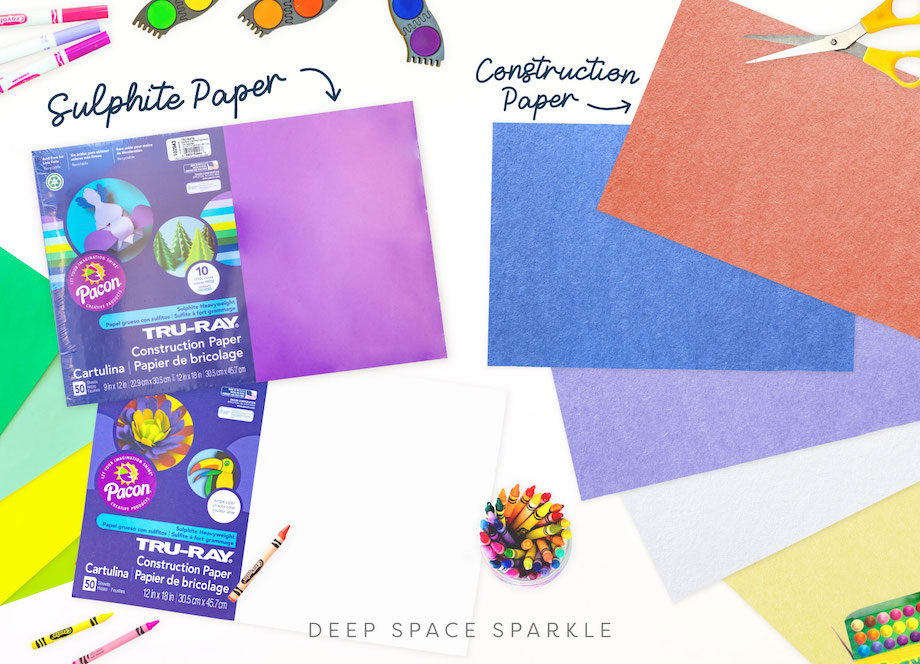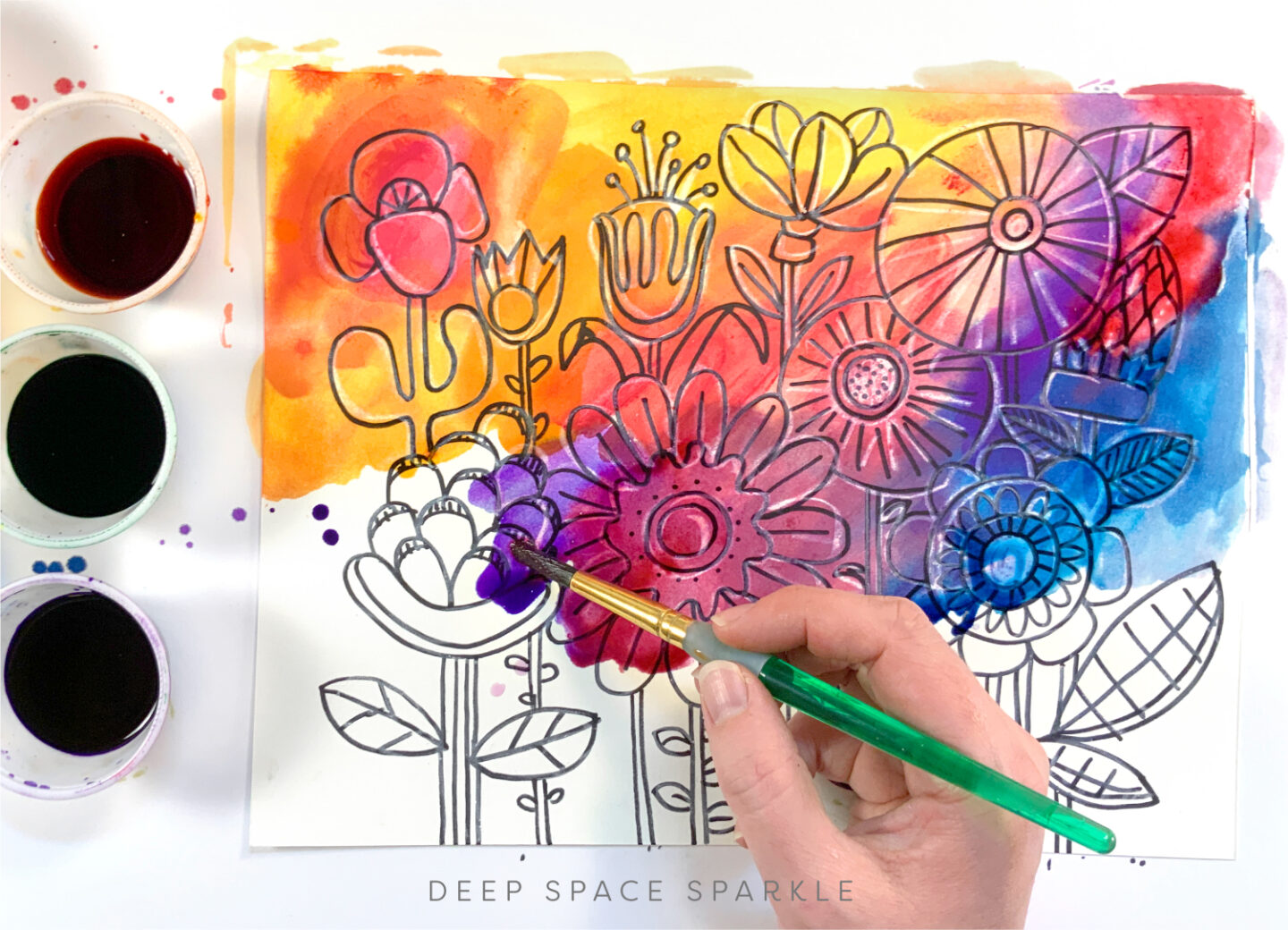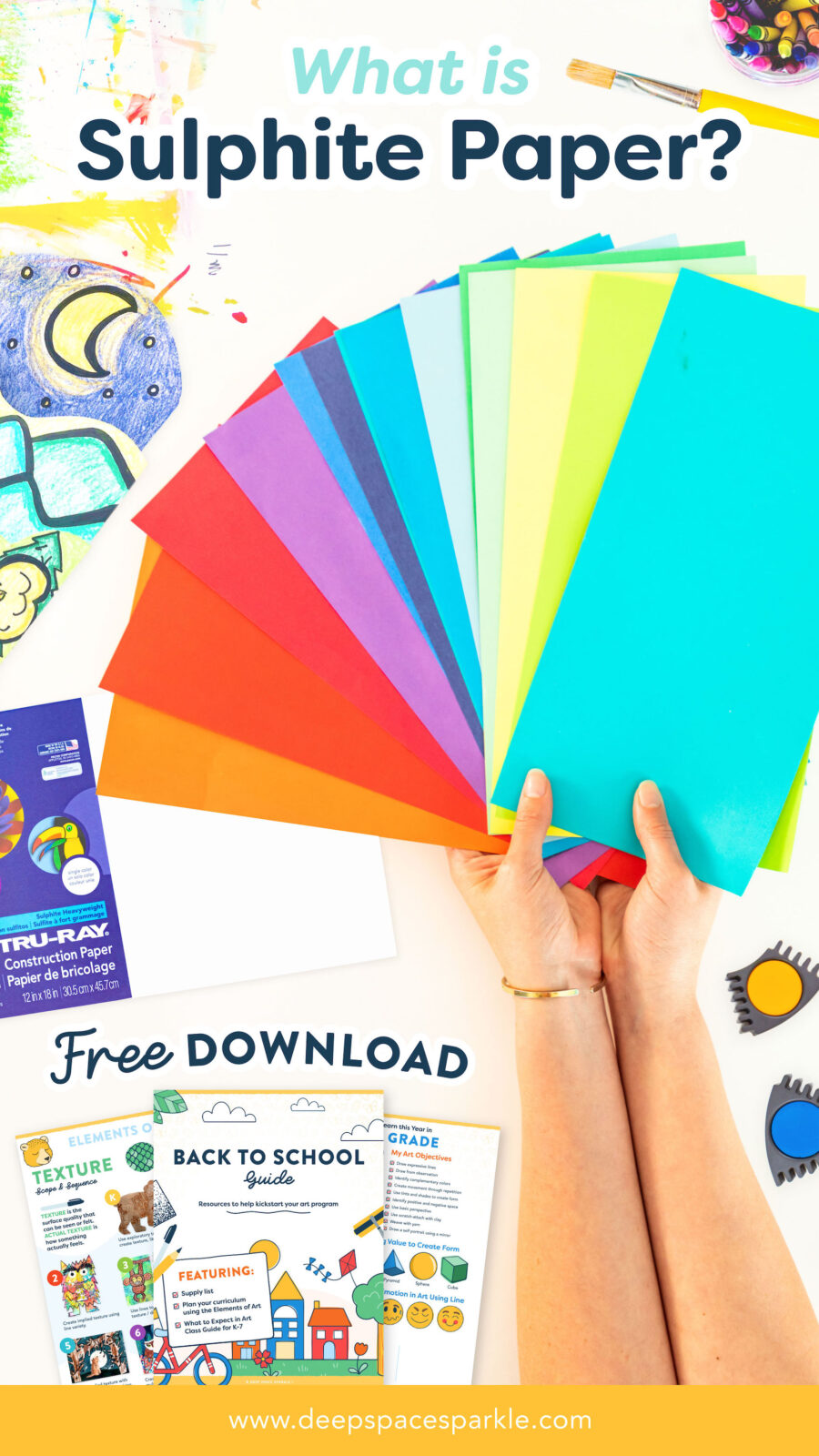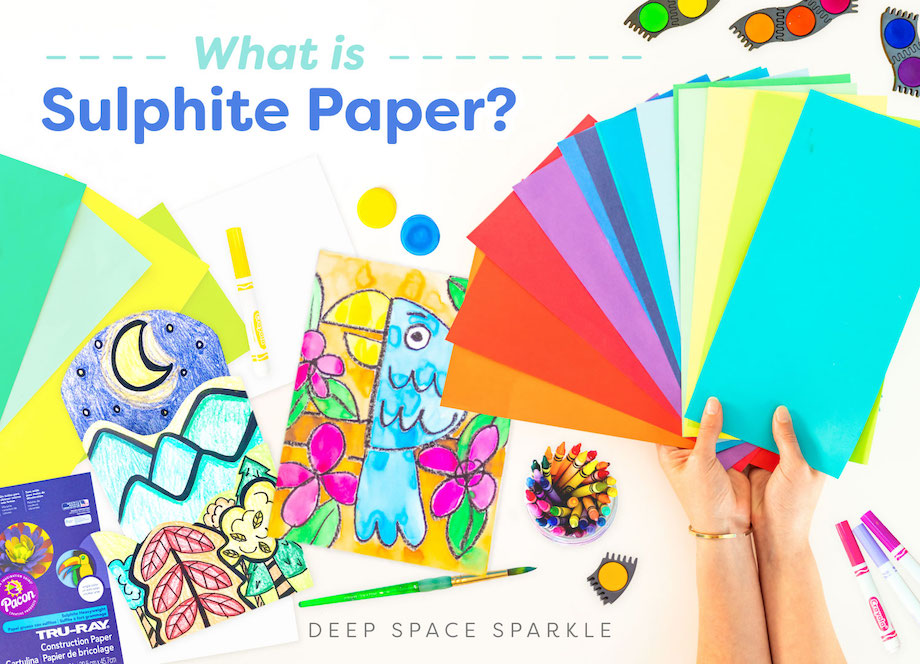Have you noticed “sulphite paper” listed frequently in our material lists and ever wondered what it is?
If you have, don’t worry. You’re not alone.
When I first began teaching, I wasn’t too familiar with common practices and materials for teaching art to children and one of the most nagging questions I had then was What type of paper should I use for this project?
These are papers that are best suited for specific materials like watercolor paper for watercolor paints, but in many cases, sulphite paper has really been my go-to for a variety of different media, especially when cost and quantity are factors.

Sulphite paper, also referred to as construction paper, is a type of construction paper.
It’s important to note that it’s not the inexpensive construction paper commonly found in craft stores. Sulphite construction paper is made from a process that extracts the lignin from wood chips and produces pure cellulose fibers, making sulphite paper an inexpensive, smooth white drawing paper that is a perfect option for any art room or home school environment.
Our favorite brand is the Pacon Tru-Ray Premium Heavy Weight Construction Paper. It comes in a bunch of vibrant colors and is perfect for art projects that use crayons, colored pencils, oil pastel, collage, etc. Plus, it cuts and folds really well.
The Best Papers for Paint
Painting in the art room is also a must and using the best paper for paint really goes a long way in creating projects that look good and are easy on your budget. When using tempera paint, whether it is liquid or cake, I find that sulphite paper holds up really well. You can even use watercolor paints on sulphite paper too, but they may not perform exactly how you might expect them to. Try them out first to see what I mean.
Watercolor Paper or Sulphite Paper?
When I really want students to focus on the effects of specific watercolor painting techniques like blending colors, wet-on-wet or salting, I pull out the watercolor paper. The effects can be so much more stunning on a paper made specifically for the paint.

There are also times when I prefer using a simple white card stock instead of sulphite for marker or pen and ink drawings. Card stock, which can be purchased at an office supply store, doesn’t seem to absorb the ink as quickly or dry out the markers as fast as the sulphite does but again, sulphite can be used in a pinch.
Do you have a different go-to paper in your art room? We would love to hear about it!
Heading back to school?
Download our back to School Guide | Resources to help kickstart your art program
It’s a 3-part strategy on how to use the Elements of Arts when planning your art curriculum including ordering supplies, a grade level checklist for the scope and sequence of K-7 Elements of Art and What I’ll Learn in Art Class posters.















Thank you so much! You and your team are marvelous! What great ideas and lessons that you share to help make us better visual art educators.
I like sulfite paper for using a pencil or crayon. I find that marker or Sharpie leaks through sulfite paper. I have had issues with sulfite paper and watercolor. Sometimes the paper falls apart or tears easily when wet. I have noticed different weights of the sulfite paper. I don’t know anything about the weight. I could use help with what weight to buy.
We like Pacon Try-Ray sulphite paper in a 76-80 lb weight.
80# is really nice for general projects/mixed media. 90# is even thicker and nice for heavier paint projects. I ordered a few different types of paper last year to just get a handle on what worked best. The cheaper paper just didn’t hold up for paints, but it’s great for younger grades that are drawing but not painting.
Pacon Tru-Ray is also my favorite paper. The colors are so rich and don’t fade. It also is great for recycling into pulp for handmade paper.
Is there a UK équivalent?
I’m not sure about UK brands but now that you know what Sulphite paper is, you can search for it in your area.
Thanks for this “best papers” video. So helpful. As a retired teacher, I am teaching some art classes & expressive art therapy in my neighborhood and on retreats. My art room in my home is small so I need to focus on what papers really work for me. Terrific support you give to so many – I’ve been following you since 2006.
Thank you Carol! I’m glad we’re both doing what we love…and 2006? That’s a LONG way back!
That paper is not in my budget.
What’s your budget? Maybe we can recommend a brand 🙂
Sulphite paper is a quality construction paper. It keeps it’s color longer than construction paper and is not as grainy as cheaper paper. It’s worth spending the extra money for better paper. I also use the packages as a paper press when using water color. As the painting dries, I press them with the unopened stacks of paper! The weight of the package straightens out my students artwork..
I LOVE giving kids color sulphite construction paper for working with oil pastels! It quickly puts their project into another level and they are really satisfied with the results they can achieve.
I love sulphite Pacon Bright White paper (80lb). It has such a buttery, smooth surface that makes any project look amazing. This is my go to paper for any project once we have brainstormed and created a rough draft in our journal or on Sketch paper. Also, I use regular construction paper to give an element of texture to a project.
This was a wonderful review/introduction to sulphate paper. Thank you.
Thank you! This is really helpful. I haven’t tried sulphite paper for watercolor projects versus watercolor painting. But now that the cost of paper is so high, this is a great resource to help balance the budget. And a great explanation of the differences.
Thanks, this was very helpful!
I spend the extra money on Tru-Ray construction paper and sulphite drawing paper because the color is brighter and the paper holds up better.
These words (construction paper and sulfite paper) don’t apply to the paper available in New Zealand. I’m guessing sulfite paper might be what we call cartridge paper but I’m not entirely convinced.
Your website is fantastic.
Second year art teacher here and I am thankful for this information! Our school has so much drawing paper, which is like the white construction paper, and I have used it for water colors as well. Plus, I have placed heavy books/trays on the paper to flatten it. Made me feel good to hear I am doing the right thing. 🙂
Also like the tip that it’s okay to have student’s work done on smaller paper! I did the bigger paper for my first graders the first time they painted. (We did Van Gogh Sunflowers) Though they did wonderful on their paintings, it did take them multiple days to complete it because there was a lot of painting to do! So again thank you for your tips!!! 🙂
Thank you! I learned a lot by reading this!
great info!
Okay, I’ve always wondered why some of the construction paper in my stash is mealy and gross while some of it is super smooth and vibrant. Thanks for the clarification! I’m adding sulphite paper to my PO list right now!!
I prefer watercolor paper, for watercolor wet on wet. Walmart has it now!
Thank you for this page. You and your team did an excellent job! I appreciated the helpful tips and the detailed review on how teachers should manage their time. Although I am not a beginner, these suggestions are thoughtful and definitely productive.